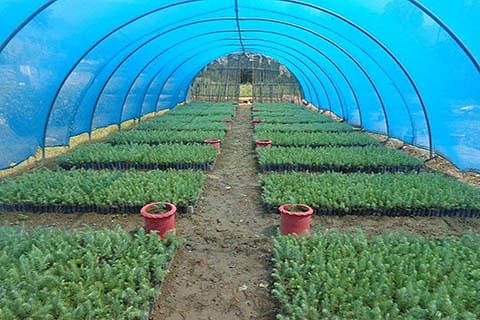A recent study by international scientists in collaboration with the food and agriculture organization of the United Nations revealed that there are about 1,100 vegetable species with a great variety of uses and growth forms cultivated throughout the globe. Vegetables and fruits are the essential food items for the better survival of humans on this blue planet.
In Kashmir valley winters are very harsh, and survival of life gets very hard. There are so many reasons behind that. Our farmers are not well equipped during this period, and our authorities also don’t make adequate effort to minimise the shortage of vegetables during the period.
Nowadays, in Kashmir valley the prices of essential commodities are skyrocketing, this is very unfortunate. People are suffering and ailing from different nutrient deficiency diseases.
During winters pulses, and dried vegetables are also used but during the studies it has been found that dried vegetables are not good for health and there are chances of getting ill by consuming them.
Today, I am going to highlight the role of the horticulture department: how the department improves the distribution, installation of greenhouse shed schemes and distribution of vegetable saplings among the growers.
The Horticulture department plays an important role, holding awareness programmes during the cultivation of vegetable and fruit varieties in the valley. As we are well aware about the fact that most of our farmers are not well educated have a lot of experiences.
They help grow their nation and play a great role, boost the economy of the country, feed the people of the nation, by their hard work. Farmer class deserves appreciation and should be brought under beneficial schemes.
They need to be provided highly advanced equipment, carriages, sprayers, fertilisers of good quality so that the yielding capacity increases.
The Horticulture department has introduced the scheme years ago, seeking applications from the desirous farmers for the installation of miniature greenhouses.
The department also provides them an amount of 10,000 (ten thousand) as subsidy. The scheme briefs the grower to submit an application on an A4 size paper; after the approval from the concerned authorities the beneficiary has to credit an amount of Rs21,000 (twenty one thousand) into the account of horticulture department.
After the installation of the greenhouse shed. Rs10,000 (ten thousand) are credited into the account of the beneficiary. This is quite beneficial for the growers, but there are still certain areas that are to be considered in favour of farmers, like:
The department should provide expert and trained staff who guide the beneficiary and provide proper counselling on how to grow seasonal vegetables and what are do’s and don’ts. The farmers do not know how to prepare saplings for the greenhouse shed and how to yield adequate quantities of seasonal vegetables.
Greenhouses are widely used throughout the world for the sapling of vegetables and for gardening purposes. In large flowering gardens greenhouse sheds are very useful and benefit the beneficiaries on a large scale.
Greenhouse effect is based on scientific means and first time it was coined by Joseph Fourier in the year 1824. A greenhouse is a building with glass walls and a glass roof. Greenhouses are used to grow plants, such as tomatoes, coriander, table radish and typical flowers.
A greenhouse keeps warm inside during winters and greenhouse gases like co2 (carbon dioxide), nitrous oxide, methane (CH4) trap the reflected sunlight and warm the greenhouse shed inside.
Suggestions: There are still a large number of farmers who have not taken up the scheme, have not known about the scheme. The horticulture department should hold more counselling programmes, and the general public should be informed via local village bodies. Seasonal seeds, fertilizers of good quality should be given to the growers on subsidised rates.
DISCLAIMER: The views and opinions expressed in this article are the personal opinions of the author.
The facts, analysis, assumptions and perspective appearing in the article do not reflect the views of GK.
A source: https://www.greaterkashmir.com












